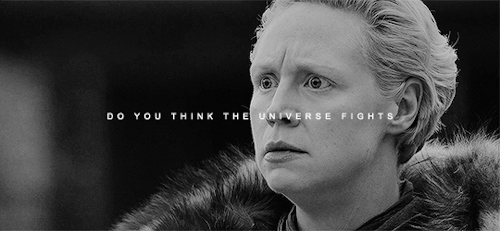
Perhaps it is a bit unfair to pigeon-hole affective states as cyclical. They are, to some degree, but the patterns they form have distinct variation that relate strongly to habit formation and, as a result, identity. Perhaps they are more… organically fractal.
Let’s step back for a moment. Let’s say individuals have a template of modality for how they see and understand the world; likewise, this modality extends to the ways in which they feel the world around them. These subscriptions create varying strata of routine and spontaneity in their responses to stimuli, depending on the persona they’ve fashioned for themselves.
For the sake of simplicity, this could be called “personality.”
Personality is complex, but I hazard to boil it down into fundamentals. Personality traits should be seen as observable qualities about a person, instead of as unyielding parts-of-a-whole. Some people may prove more concrete than others, but no one individual is completely immutable or arbitrarily random.
Personality seems more in line as the average tendencies we utilize in regards to internal and external affect.
Recognizing these patterns in people around us makes us better at establishing our own, and it also serves to create a sense of consistency and security in the world as we navigate through it. The whole summation of these observations are usually labeled generally as human nature.
This nature is yielding to paths of harmony. Degree of harmonization between oneself and the external world is relative to the person, but in general, it favors parity for the sake of survival.
Affective shifting is the result of dissonance. Dissonance is disharmony, or a fixation on an imbalance that has yet to be resolved.

These moments of reflection are moments of confrontation with the seemingly chaotic nature of our own personal universes. In order to have a sense of self, we rely on pragmatic schema to define ourselves, our behavior, and the reasons as to why these relationships exist as they do. It’s not uncommon to find them challenged on a normal, regular basis.
When we do find them challenged, our first mode of operation is to employ comfortable coping devices. These vary from individual to individual, and are categorized in terms of construction and destruction. On the daily, habitual level, they are fairly innocuous, serving as band-aids for our minds in order to bridge gaps in thought and behavior.
Stress, or sense of urgency, is what characterizes the roles we take and the devices we use towards varying circumstances. The higher the internal stress response to external stimuli, the more obvious the inappropriateness of the device becomes. We can become either too reliant on active devices (maligned construction) or too reliant on futile devices (maligned destruction).
When our devices fail, our next step is to employ another device. This is part of the cycling process. Due to the complexity of our emotions and our cerebral thinking, we may cycle through countless devices, or utilize multiple devices, in order to find a satisfactory balance for resolution.
Yet still, if we reach the end of our cycling process, we may find ourselves at a stand still.
This is crisis.

Crisis can either be resolved by submission, domination, persistence, or transformation. They are not exclusive to each other, but the most dramatic results to character often happen when one is realized to a much greater extent than the others. Events that force humans into these combustive states are life catalysts, and the result is usually a precipitant that results in semi-permanent, long term schema.
A new bingo sheet to fill up.
Carrying on with this analogy, that sheet has the same center square that all life is given. For all life forms, the free space has the tile sitting upon it already.
For us, it is the same way — we simply have the resolve and desire to slide it aside as to see what it hides.

Ultimately, it is the end of the cycle, and the way we restart. It is the moment, or checkpoint, in time, that allows us to supersede ourselves. It is the literal recognition of an affective state that is in the process of dying, and it is the moment in which our future moments are demarcated upon.
This sliver in time is the informant for our relationship with time, and the very basis of our relativity to time.
Advertisements Share this:




